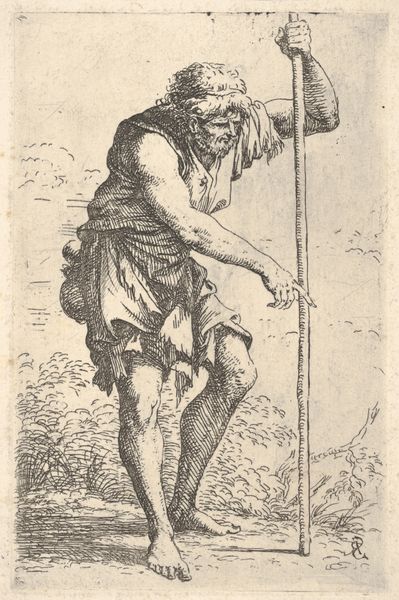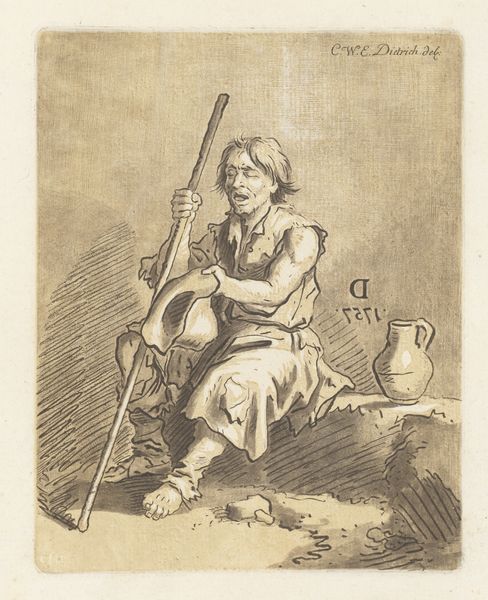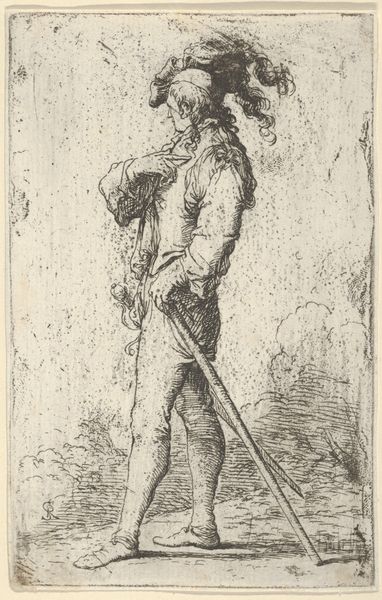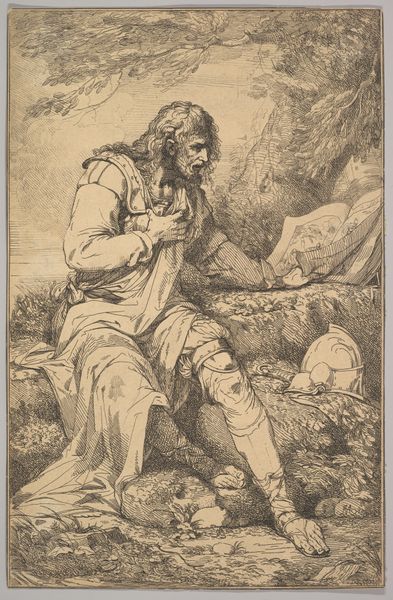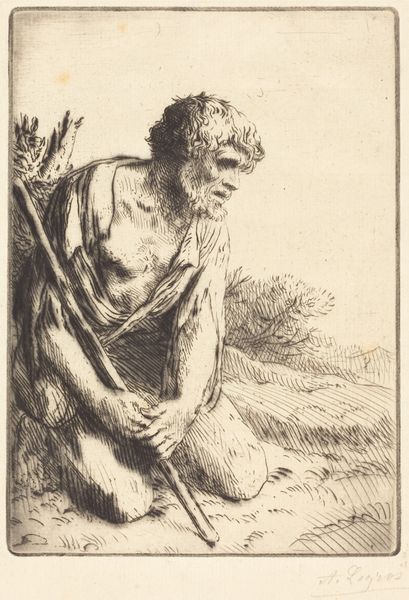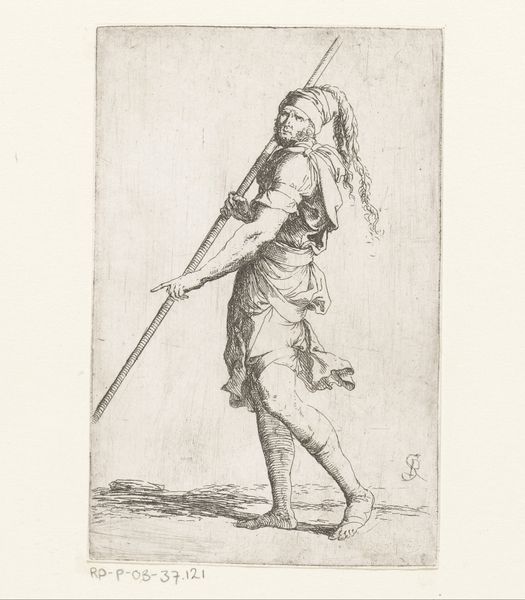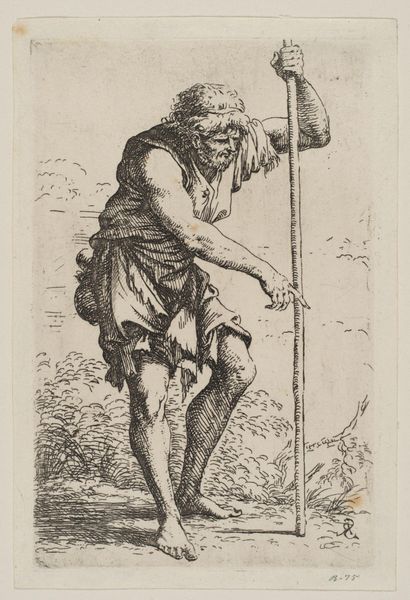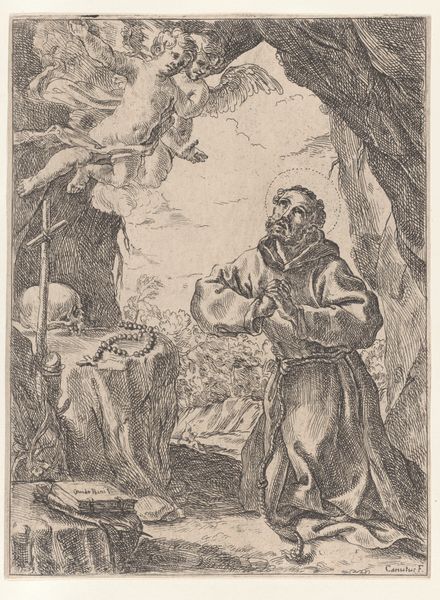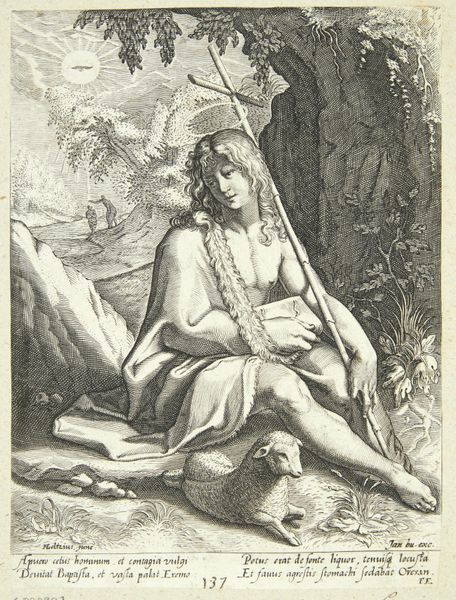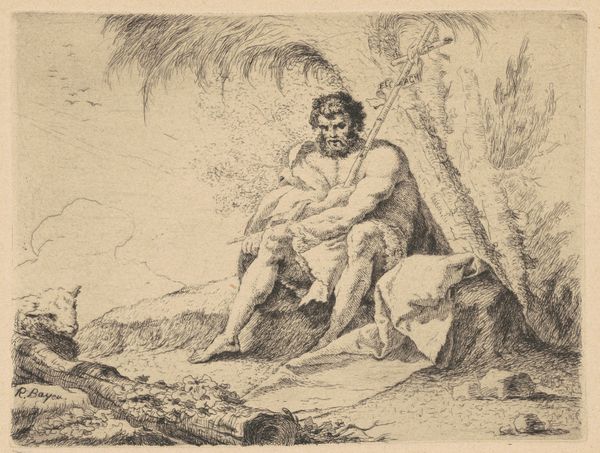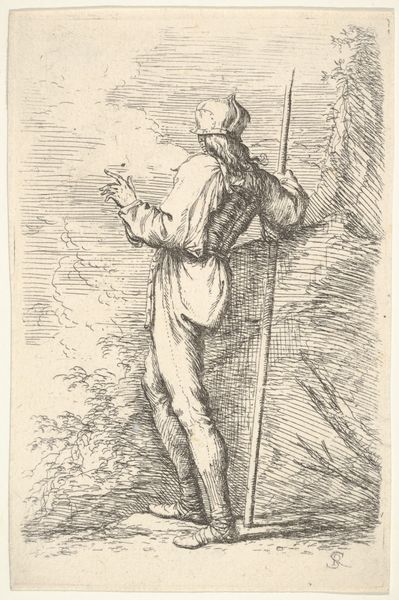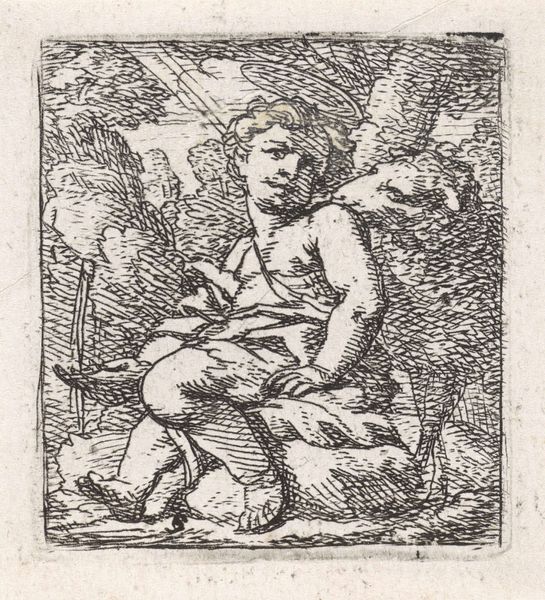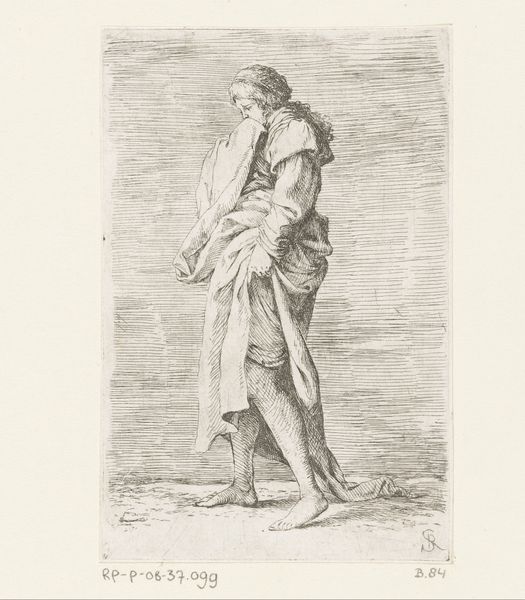
drawing, dry-media, pencil
#
portrait
#
pencil drawn
#
drawing
#
pencil sketch
#
classical-realism
#
figuration
#
dry-media
#
pencil drawing
#
pencil
#
academic-art
Copyright: Public Domain
Editor: Here we have an intriguing drawing titled "Sitzende männliche Modellfigur" by Friedrich Wilhelm Hirt. It appears to be a pencil sketch of a seated male figure. It's striking how the artist uses these rough pencil strokes to suggest depth and form. What's your take on this piece? Curator: Well, I'm immediately drawn to the process, the very means of production at play here. This isn't just about depicting a figure; it's about the labor involved in creating it. Think about Hirt, repetitively making marks, each one building up to the final image. Notice, too, how the background is rendered. The hatching seems less about creating a realistic space and more about just, well, making. Does that suggest anything to you about the function of drawings like these? Editor: It seems almost like he's experimenting or practicing. Could this have been a study for something larger? Curator: Exactly! It invites us to consider art-making as a type of labor, dismantling traditional hierarchies between “finished” artworks and the work that happens behind the scenes. Moreover, let's consider who is being represented here, and who is doing the representing. What does it mean that the artist, most likely, an affluent man, is producing an image of labor, potentially exploiting someone else's likeness for his artistic development? Editor: So you're saying that this drawing isn't just a representation of a person, but also a document of the social dynamics within the art world? It highlights labor and class distinctions through the very act of its creation. Curator: Precisely! It prompts questions about consumption too. For whom was this image made, and how does it circulate? The materials themselves - the pencil, the paper - also have a history, connected to industrial production and accessibility to materials within a burgeoning market of images. Editor: That's a perspective I hadn't considered. I always focused on composition and form, but understanding the material process and the social context behind its making really enriches the meaning. Curator: Agreed! And remember, this way of reading allows us to approach a wider range of objects with new appreciation, even things we might not traditionally think of as art.
Comments
No comments
Be the first to comment and join the conversation on the ultimate creative platform.
